Serving 553 students in grades Kindergarten-5, Watson Technology Center ranks in the top 20% of all schools in Texas for overall test scores (math proficiency is top 20%, and reading proficiency is top 20%).
The percentage of students achieving proficiency in math is 61% (which is higher than the Texas state average of 41%). The percentage of students achieving proficiency in reading/language arts is 70% (which is higher than the Texas state average of 51%).
The student:teacher ratio of 16:1 is higher than the Texas state level of 14:1.
Minority enrollment is 84% of the student body (majority Hispanic), which is higher than the Texas state average of 75% (majority Hispanic).
Quick Stats (2025)
- School Type: Magnet School
- Grades: Kindergarten-5
- Enrollment: 553 students
- Student:Teacher Ratio: 16:1
- Minority Enrollment: 84%
- Overall Testing Rank: Top 20% in TX
- Math Proficiency: 61% (Top 20%)
- Reading Proficiency: 70% (Top 20%)
- Science Proficiency: 45-49% (Top 50%)
- Source: National Center for Education Statistics (NCES), TX Dept. of Education
Top Rankings
Watson Technology Center ranks among the top 20% of public schools in Texas for:
Category
Attribute
Overall Rank
Math Proficiency
Reading/Language Arts Proficiency
Diversity
School Overview
Watson Technology Center's student population of 553 students has stayed relatively flat over five school years.
The teacher population of 35 teachers has grown by 9% over five school years.
School Type
Grades Offered
Grades Kindergarten-5
Total Students
553 students
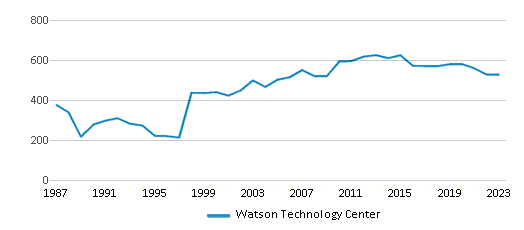
Gender %
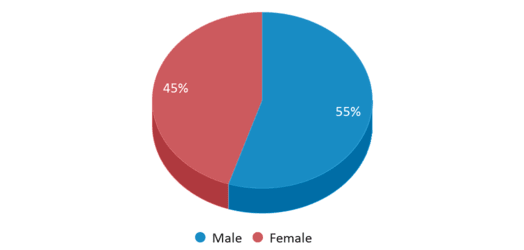
Total Classroom Teachers
35 teachers
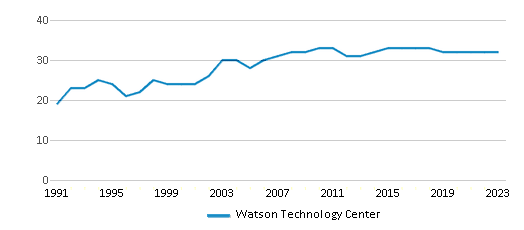
Students by Grade
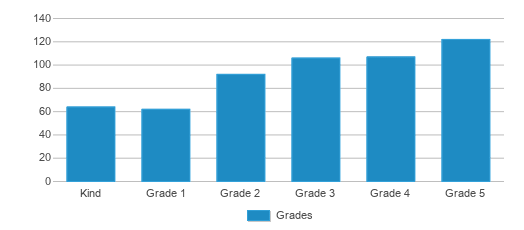
School Rankings
Watson Technology Center ranks within the top 20% of all 8,188 schools in Texas (based off of combined math and reading proficiency testing data).
The diversity score of Watson Technology Center is 0.65, which is more than the diversity score at state average of 0.64. The school's diversity has stayed relatively flat over five school years.
Overall Testing Rank
#982 out of 8188 schools
(Top 20%)
(Top 20%)
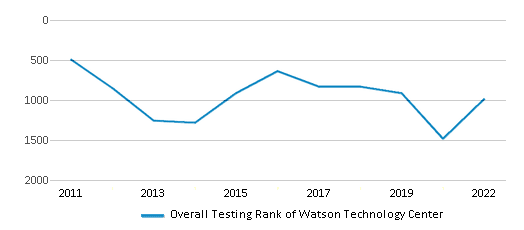
Math Test Scores (% Proficient)
61%
41%
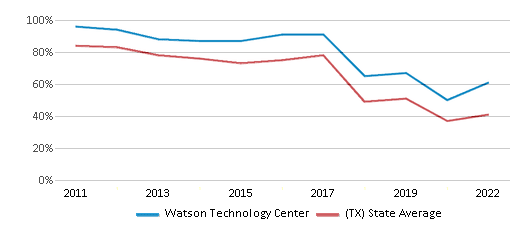
Reading/Language Arts Test Scores (% Proficient)
70%
51%
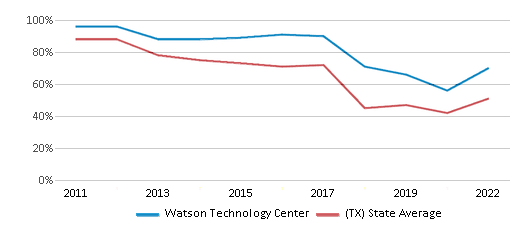
Science Test Scores (% Proficient)
45-49%
46%
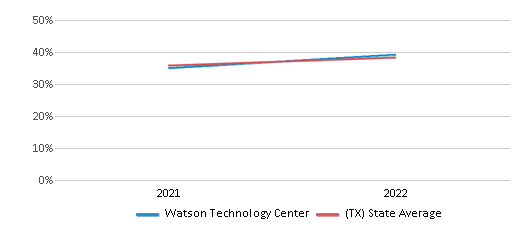
Student : Teacher Ratio
16:1
14:1
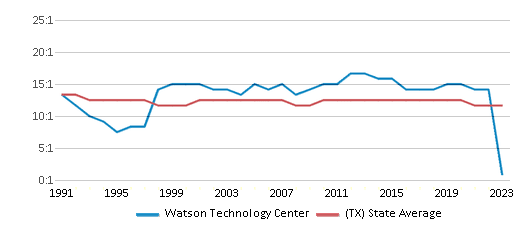
American Indian
n/a
n/a
Asian
10%
6%
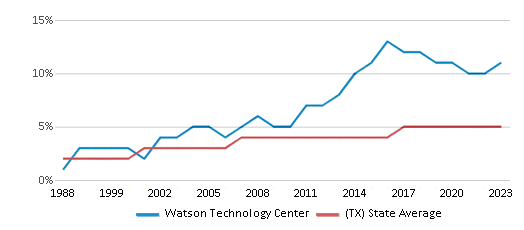
Hispanic
54%
53%
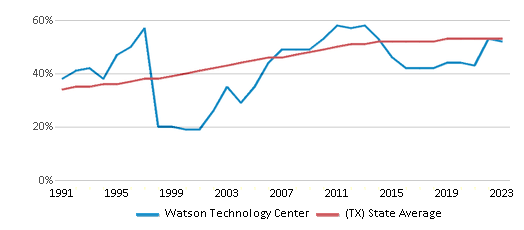
Black
17%
13%
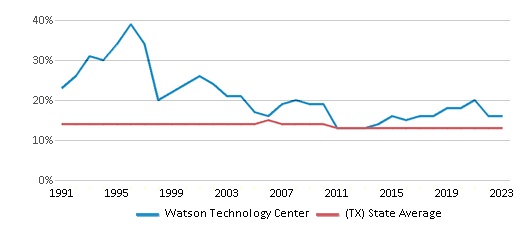
White
16%
25%
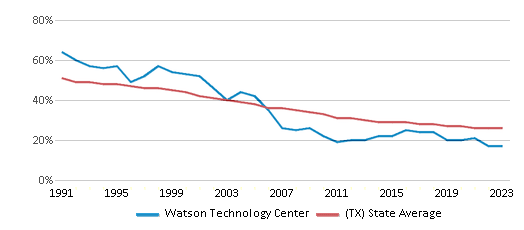
Hawaiian
n/a
n/a
Two or more races
3%
3%
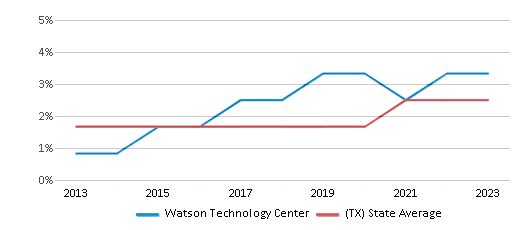
All Ethnic Groups
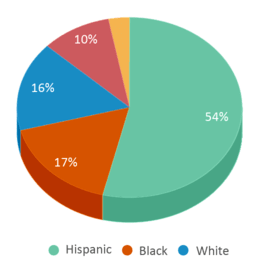
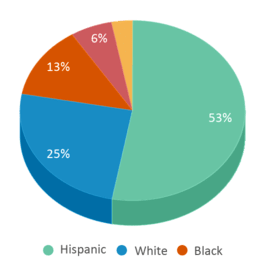
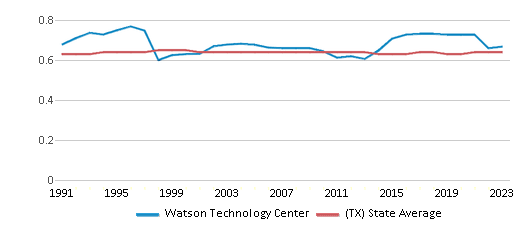
Participates in the National School Lunch Program (NSLP)
Yes
Eligible for Free Lunch
50%
57%
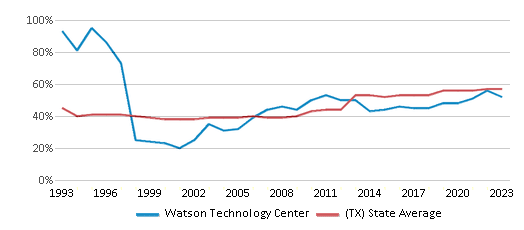
Eligible for Reduced Lunch
12%
5%
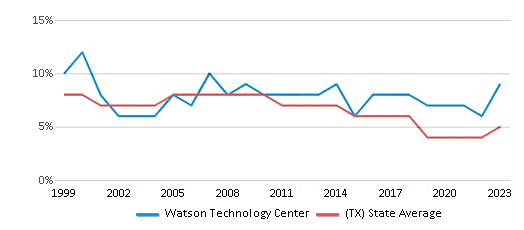
School Statewide Testing
School District Name
Source: National Center for Education Statistics (NCES), TX Dept. of Education
Profile last updated: 02/09/2025
Frequently Asked Questions
What is Watson Technology Center's ranking?
Watson Technology Center is ranked #982 out of 8,188 schools, which ranks it among the top 20% of public schools in Texas.
What percent of students have achieved state testing proficiency in math and reading?
61% of students have achieved math proficiency (compared to the 41% TX state average), while 70% of students have achieved reading proficiency (compared to the 51% TX state average).
How many students attend Watson Technology Center?
553 students attend Watson Technology Center.
What is the racial composition of the student body?
54% of Watson Technology Center students are Hispanic, 17% of students are Black, 16% of students are White, 10% of students are Asian, and 3% of students are Two or more races.
What is the student:teacher ratio of Watson Technology Center?
Watson Technology Center has a student ration of 16:1, which is higher than the Texas state average of 14:1.
What grades does Watson Technology Center offer ?
Watson Technology Center offers enrollment in grades Kindergarten-5
What school district is Watson Technology Center part of?
Watson Technology Center is part of Garland Independent School District.
In what neighborhood is Watson Technology Center located?
Watson Technology Center is located in the Monica Park neighborhood of Garland, TX.
School Reviews
5 11/10/2023
Watson provided my child with a holistic education. It maximized my children's potential by providing them opportunities to explore their own learning styles according to their unique personalities as second language learners. My children always scored well and continued to grow until they were identified as GT because they were provided the opportunities to learn to the best of their abilities through their various programs and a mixture of hands-on and digital tools that made them learn many different things in many different ways. The teachers had different unique ways that allowed the students to experience the realities in life where they have to be working with different personalities while maintaining their own unique ways with resilience. The number of field trips they had in Watson was always more than what other students could get from other schools ( not less than 5 field trips per year ). I love this school and I could not be more thankful.
Review Watson Technology Center. Reviews should be a few sentences in length. Please include any comments on:
- Quality of academic programs, teachers, and facilities
- Availability of music, art, sports and other extracurricular activities
Recent Articles

What Is A Charter School?
Explore the world of charter schools in this comprehensive guide. Learn about their history, how they operate, and the pros and cons of this educational innovation. Discover key facts about charter schools, including admission policies, demographics, and funding, as well as what to look for when considering a charter school for your child.

10 Reasons Why High School Sports Benefit Students
Discover the 10 compelling reasons why high school sports are beneficial for students. This comprehensive article explores how athletics enhance academic performance, foster personal growth, and develop crucial life skills. From improved fitness and time management to leadership development and community representation, learn why participating in high school sports can be a game-changer for students' overall success and well-being.

February 05, 2025
Understanding the U.S. Department of Education: Structure, Impact, and EvolutionWe explore how the Department of Education shapes American education, from its cabinet-level leadership to its impact on millions of students, written for general audiences seeking clarity on this vital institution.






